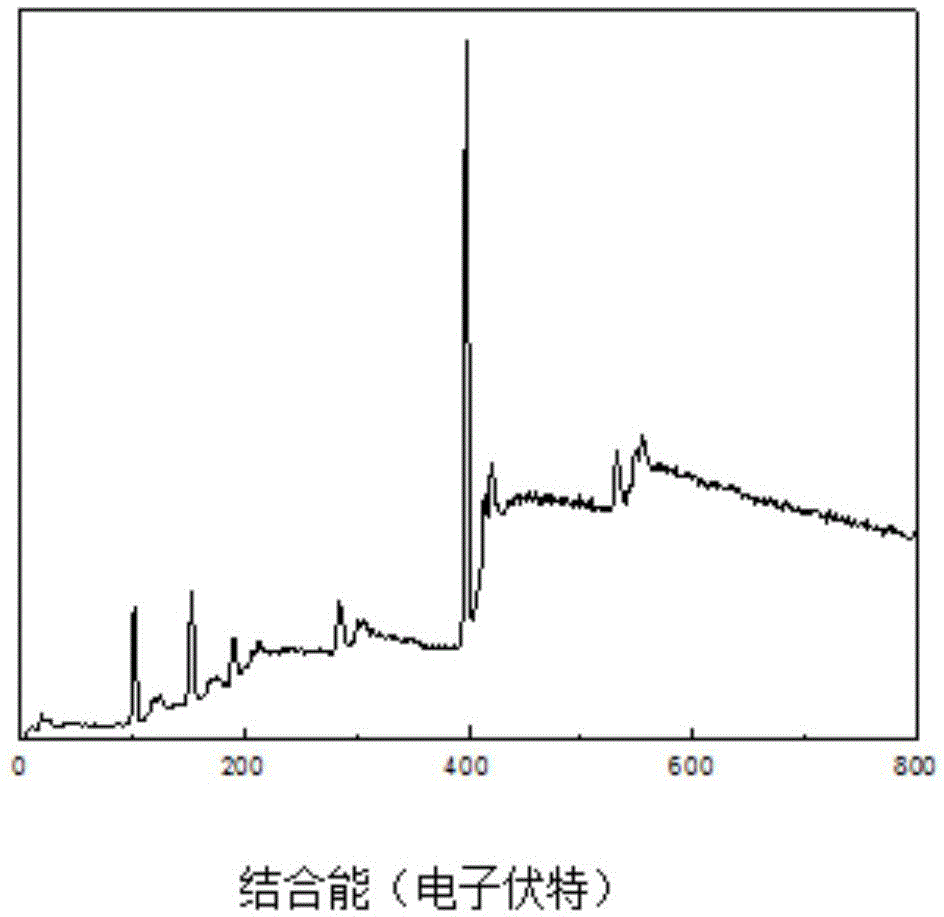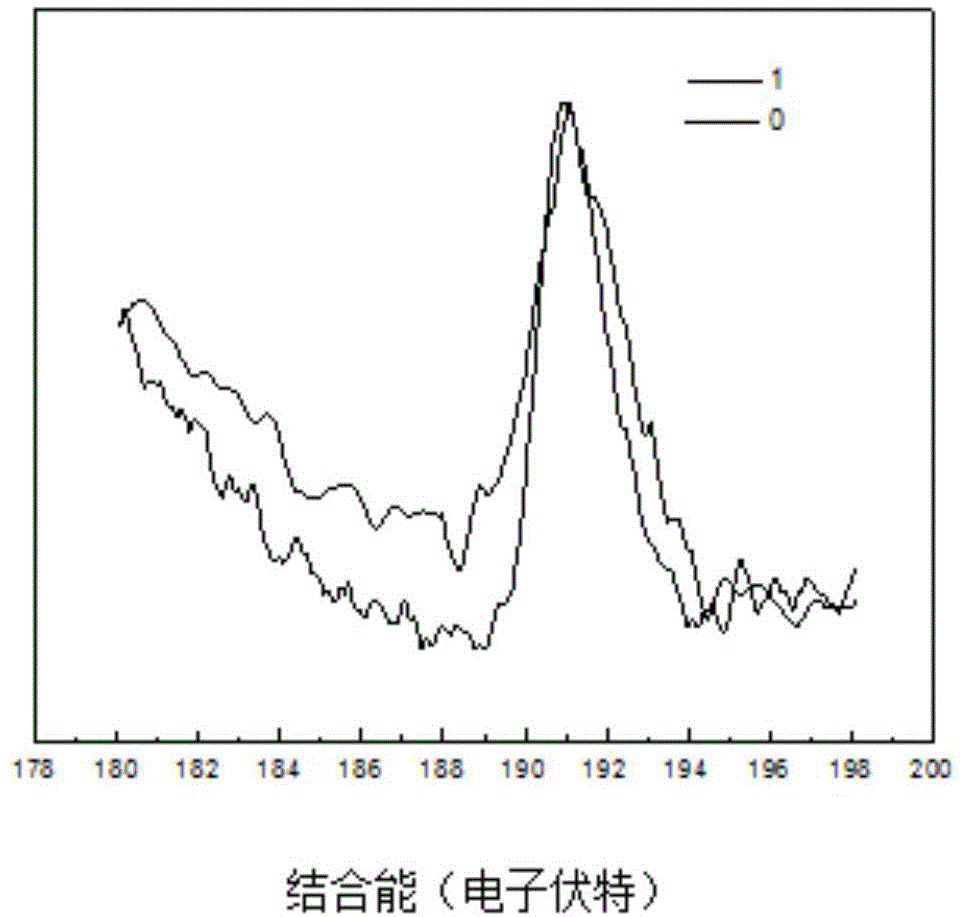Method for preparing boron-modified silicon nitride fiber
A technology of silicon nitride fiber and boron modification, which is applied in the field of preparation of boron-modified silicon nitride fiber, can solve the problems of unfavorable influence on the spinnability of the precursor body, damage to the fibril structure, and low content of B element, and achieve an improvement Mechanical properties, improved stability, high activity effect
- Summary
- Abstract
- Description
- Claims
- Application Information
AI Technical Summary
Problems solved by technology
Method used
Image
Examples
Embodiment 1
[0040] (1) Preparation of highly active Si-N fibers. Put polycarbosilane non-melting fibers in the decarburization-nitriding system, vacuumize, then replace the gas in the system with nitrogen to normal pressure, repeat at least three times; feed high-purity ammonia gas, and heat up, heating system: 2 hours Raise the temperature to 500°C, raise the temperature to 700°C at 0.8°C / min, keep it for 0.5h, raise the temperature to 1200°C at 100°C / h, and keep it for 1h. Cool to room temperature with nitrogen gas to obtain highly active Si-N fibers; (2) Boronation of highly active Si-N fibers. In a nitrogen atmosphere, place highly active Si-N fibers and sodium fluoroborate in a decarburization-nitridation system, program the temperature up to 450°C, react for 24 hours, and cool to room temperature with nitrogen; (3) Nitrogen of boronized fibers change. Introduce high-purity ammonia gas, heat up to 1350°C for 6 hours, and keep warm for 1.5 hours. Cool to room temperature with nitro...
Embodiment 2
[0044] (1) Preparation of highly active Si-N fibers. Put polycarbosilane non-melting fibers in the decarburization-nitriding system, vacuumize, and then replace the gas in the system with argon to normal pressure, repeat at least three times; feed high-purity ammonia gas, and heat up, heating system: 2 The temperature was raised to 500°C in 1 hour, and then the temperature was raised to 700°C at 0.9°C / min, then kept for 0.5h, then raised to 1000°C at 100°C / h, and kept for 2h. Cool to room temperature with argon to obtain highly active Si-N fibers; (2) Boronation of highly active Si-N fibers. In an argon atmosphere, place the highly active Si-N fiber and potassium fluoroborate in a decarburization-nitridation system, program the temperature to 400°C, react for 30 hours, and cool to room temperature with argon; (3) boronized fiber Nitriding. Introduce high-purity ammonia gas, heat up to 1400°C for 6 hours, and keep warm for 1 hour. Cool to room temperature with argon, and it'...
PUM
| Property | Measurement | Unit |
|---|---|---|
| decomposition temperature | aaaaa | aaaaa |
| strength | aaaaa | aaaaa |
| elastic modulus | aaaaa | aaaaa |
Abstract
Description
Claims
Application Information
 Login to View More
Login to View More - R&D
- Intellectual Property
- Life Sciences
- Materials
- Tech Scout
- Unparalleled Data Quality
- Higher Quality Content
- 60% Fewer Hallucinations
Browse by: Latest US Patents, China's latest patents, Technical Efficacy Thesaurus, Application Domain, Technology Topic, Popular Technical Reports.
© 2025 PatSnap. All rights reserved.Legal|Privacy policy|Modern Slavery Act Transparency Statement|Sitemap|About US| Contact US: help@patsnap.com


